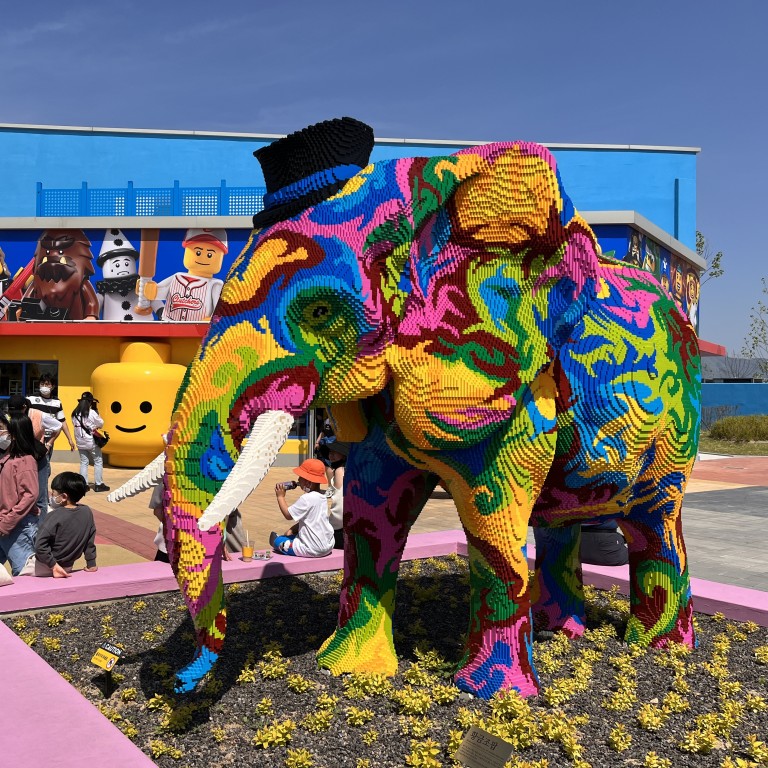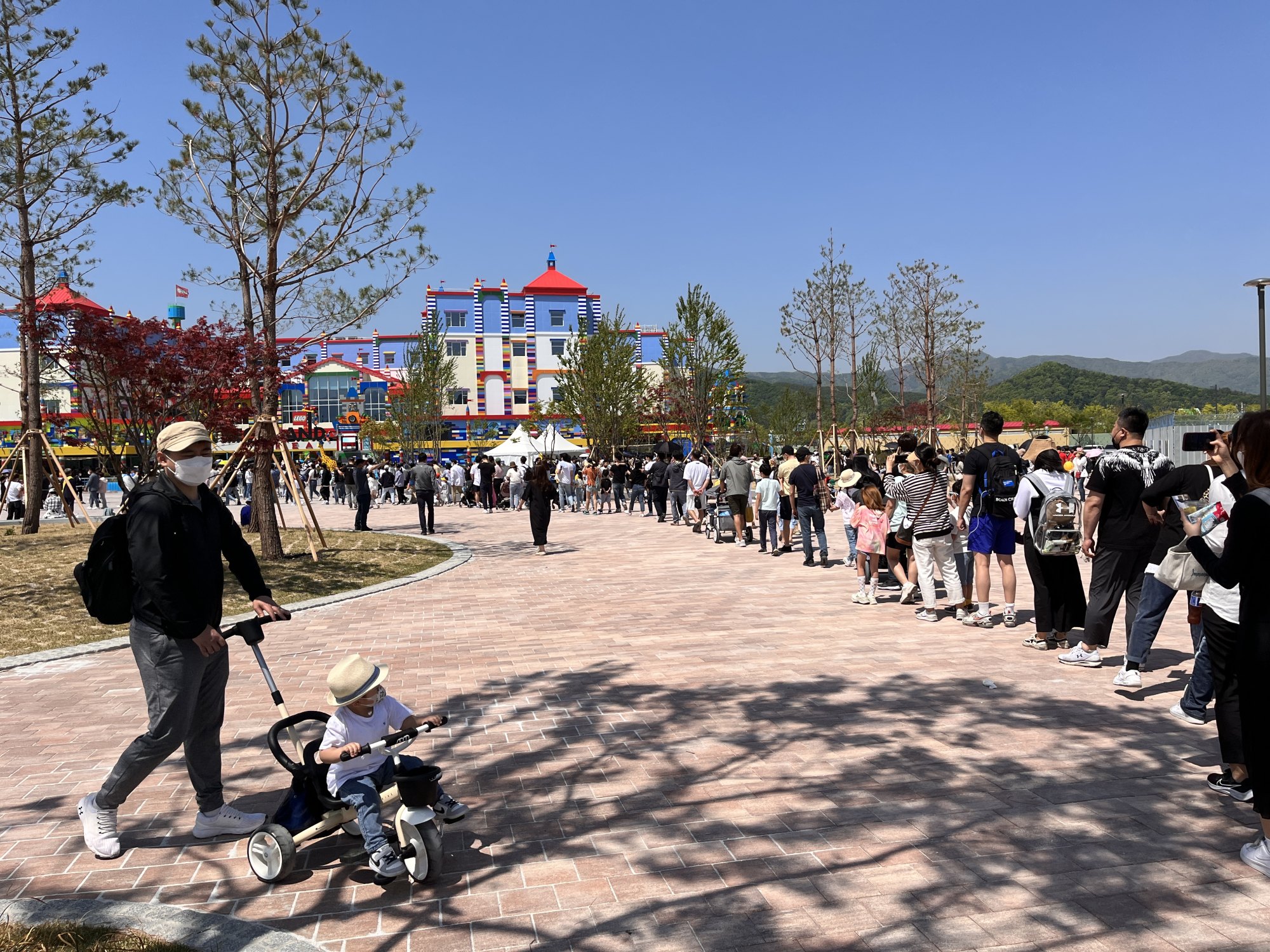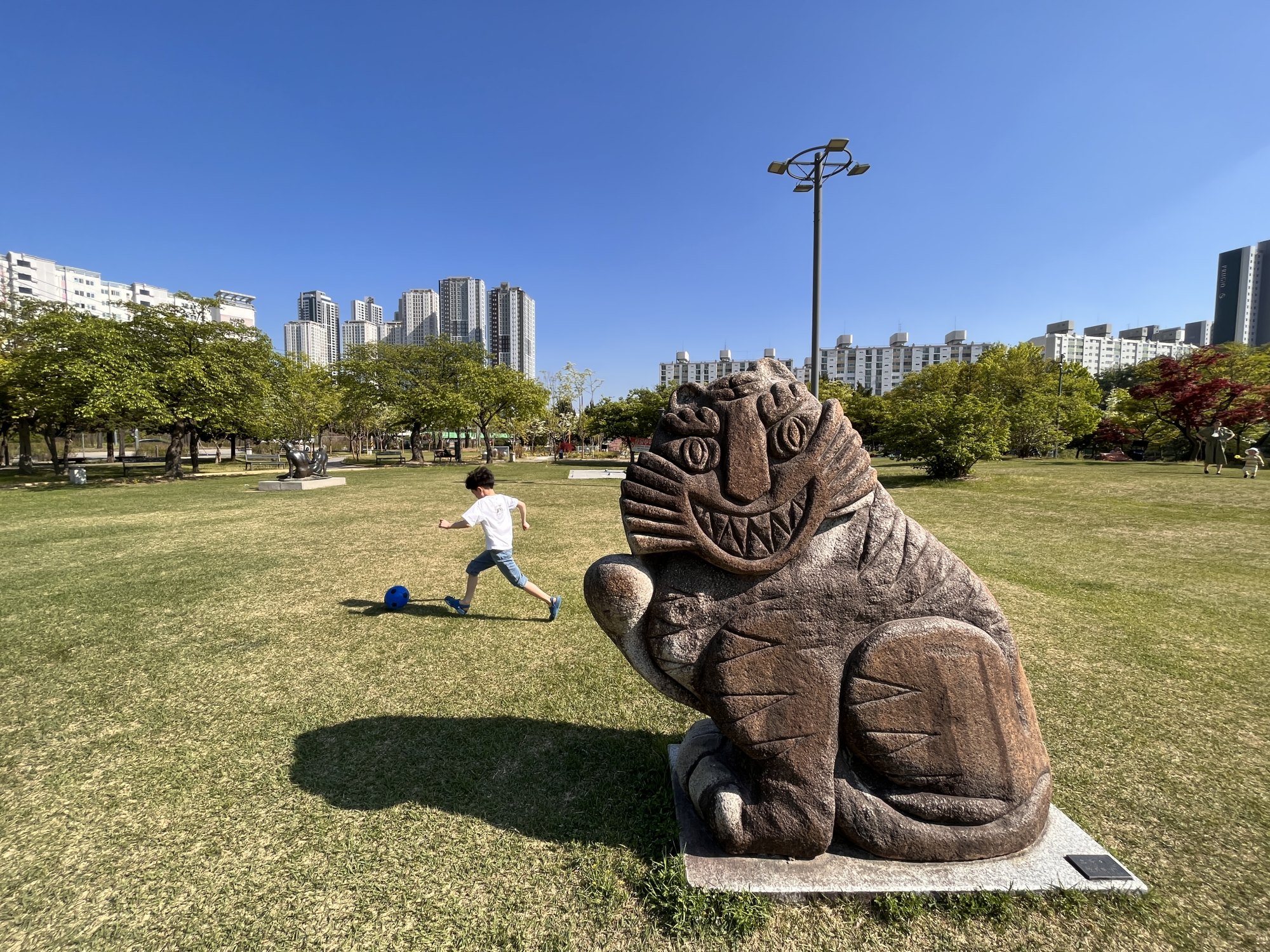
A trip to South Korea’s new Legoland resort and beyond to Chuncheon city for cycling, a sculpture park, an Ethiopian cafe and the Folk Flea Market
- After visiting the newly opened Legoland Korea Resort and its hordes of selfie takers, a writer and his family head off around Chuncheon
- They visit the Gongji Stream Sculpture Park, enjoy an Ethiopian cafe and fill up at the Toegye Makguksu diner
It’s difficult to think of a better way to celebrate the 100th anniversary of Children’s Day in South Korea than by taking my four-year-old son, Theo, to the Legoland Korea Resort, which has timed its grand opening for this day (May 5).
The new attraction is on Hajung-do island, in the mountain-enfolded city of Chuncheon, which is a 75-minute train ride east of Seoul, and at 11am there is a daunting queue of families stretching a kilometre or so along the new road leading to Legoland.
The sky is powdery blue, with not a wisp of cloud. Rounded hills blanketed in oak and pine give way to equally green peaks and ridges in the distance, and from this shard of an island in Uiam Lake, Chuncheon (population 275,000) appears to be little more than a few scattered clusters of flat towers.
We inch past newly planted Asian fringe trees blooming with white bell-shaped clusters and before long, we’re close enough to the gate to see Lego pennants and hear rousing orchestral music. A knot of protesters near the entrance casts a shadow on the event. Holding up banners with messages such as “Legoland is the Shame of Chuncheon City!”, they are charging that the developer of the resort has failed to properly conserve Goguryeo dynasty (37BC to AD668) artefacts and prehistoric dolmens uncovered during construction.


Our QR codes are scanned and we enter the plastic citadel. The third such resort in Asia, after Malaysia and Japan, Legoland Korea turns out to be a selfie taker’s paradise. It is hard to walk a few steps without ruining someone’s snapshot. While it’s no surprise to find zones such as Ninjago World and Lego Castle, there are also a few nods to the host country, such as Miniland, a selection of South Korean tourist sites given the Lego treatment. The silvery Lotte World Tower rises like a supertall bamboo shoot.
By early afternoon, sensory overload and the sun are beginning to drain the 12,000 merrymakers. One family has unfurled a picnic tarp and flopped down in the shade of a pirate ship’s hull; a depleted mother is sitting slumped over, unconscious. It’s time to see what else Chuncheon has to offer.
Vietnam is building cable cars right and left. But not everyone is on board
Our taxi off the Legoland island is driven by Jeong Yong-hwan, a grizzled fellow with dyed black hair and a soft chuckle. “This is good for the city,” he says, contradicting the protesters. He also fully endorses a cable car that opened in October 2021, with Austrian-made cabins that dangle their way across the lake before reaching a top station two-thirds of the way up Samaksan Mountain (654 metres).
Instead, though, we get out of Jeong’s taxi at the Gongji Stream Sculpture Park. We pass a curious tripled-domed structure – the Memorial Hall for Ethiopian veterans in the Korean war – and descend a few steps to the cool interior of Ethiopia Bet, a cafe that’s been here since 1968, decades before Korea’s coffee craze kicked off in earnest.
Seen through the window, swan-shaped pedal boats mull about in the mouth of Gongji stream and white azaleas sway in the breeze. While it’s a bit surreal to be sitting next to hand-woven African baskets and portraits of Emperor Haile Selassie, it makes just as much sense as a Lego hotel and the city’s big summer event, an international mime festival.


Re-emerging into the sunlight, we find an extensive network of bike paths being well used, riders cruising by in wraparound mirror sunglasses and skintight outfits. Chuncheon is a favourite destination for Seoul cyclists because they can follow the Han River for 115km and then catch a ride back on the Intercity Train eXpress-Cheongchun (ITX).
We follow some of the riders southeast, along Yeongseo Road, towards Namchuncheon Station, and duck into the Folk Flea Market. The shops and stalls are beneath the elevated train line and the massive concrete supports are decorated with murals depicting rural traditions. In one, birds are fed spoonfuls of red pepper paste before a cockfight.
A hush hangs over what stalls there are because it’s not a market day – a date ending in two or seven – but I peruse a stack of foul-looking fermented soybean paste blocks. On some tables stand rows of glistening bottles containing sesame oil; on others are mounds of medicinal herbs and roots. Finally, I find the stall I’ve been looking for, and buy bags of crispy deep-fried seaweed, lotus root, hot peppers and other vegetables.

The heat of the day is subsiding when we enter the Toegye Makguksu diner (established in 1994), opposite the station, for an early dinner. Chuncheon is best known for its dak galbi (spicy stir-fried chicken) but its makguksu (buckwheat noodles) are also good. When the stainless-steel bowls arrive at the table, conversation ends and the slurping begins. The dish seems made for just such a day as today thanks to its refreshing ice broth and stimulating blend of sweet, salty, savoury and spicy. Thankfully, the child’s serving comes without red-pepper paste.
On a TV screen on one of the white walls, a Korean broadcaster is showing black-and-white footage of Children’s Day 1956. The youngsters of the past are encouraged to box, sing and dance, and dress up as Joseon dynasty (1392 to 1910) royalty. Those children would have been unaware of the interlocking toy bricks a company in faraway Denmark had started producing just seven years earlier.

